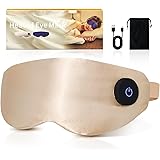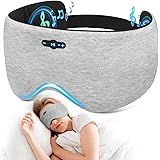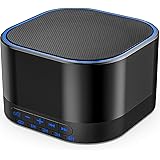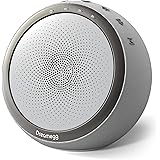Mastering Your Outdoor Sleep System: A Comprehensive Guide to Choosing the Best Sleeping Pad for Camping and Backpacking
Embarking on a camping or backpacking adventure requires meticulous gear selection, and few items are as critical to your comfort and well-being as your sleeping pad. As highlighted in the video above, selecting the right sleeping pad can dramatically transform your outdoor experience, turning a cold, lumpy night into a restful, warm one. This guide delves deeper into the nuances of sleeping pad technology, helping you navigate the options available for your next expedition.
A high-quality camping sleeping pad isn’t merely a luxury; it serves two vital functions. Firstly, it provides cushioning against uneven or hard ground, ensuring a more comfortable sleep. Secondly, and arguably more importantly, it acts as a crucial layer of insulation, preventing your body heat from transferring directly into the cold ground. Without adequate ground insulation, even the warmest sleeping bag can struggle to keep you warm.
Types of Sleeping Pads: Understanding the Core Technologies
The market offers three primary categories of sleeping pads, each with distinct advantages and drawbacks. Understanding their construction and performance characteristics is the first step in making an informed choice for your camping sleeping pad or backpacking sleeping mat.
Closed-Cell Foam Mats: The Durable, Lightweight Classic
Closed-cell foam mats represent the traditional choice for many outdoor enthusiasts, reminiscent of the gear used in Boy Scouts or Duke of Edinburgh award schemes. Constructed from dense foam with tiny, sealed air pockets, these mats are inherently waterproof and incredibly durable. They resist punctures, making them a highly reliable option for rugged terrain where an inflatable pad might be vulnerable.
While exceptionally lightweight, their primary disadvantage lies in their bulk. Closed-cell foam mats like the Thermarest Z-Lite Sol or the Big Agnes Third Degree often roll or fold, but still strap to the outside of a pack, consuming significant exterior volume. Comfort is also a trade-off; at around an inch thick, they offer minimal cushioning, which can be particularly noticeable for side sleepers. However, their reliability and low cost—ranging from as little as £5 for basic models to £30 for branded versions with advanced features like reflective coatings or insulating air pockets—make them an attractive budget-friendly option or a dependable backup.
Self-Inflating Sleeping Pads: Balancing Comfort and Portability
Self-inflating pads offer a middle ground between the robust simplicity of foam mats and the plush comfort of air mattresses. These pads feature an open-cell foam interior, akin to a sponge, encased within an airtight fabric shell. Upon opening the valve, the foam expands, drawing air into the pad and largely inflating itself. A few additional breaths are typically needed to achieve full firmness.
Generally, self-inflating pads are more compact than closed-cell foam mats but bulkier than modern air mattresses. Their foam and air construction provides superior comfort compared to foam mats, often reaching 1-2 inches in thickness. However, this design introduces susceptibility to punctures, similar to air mattresses, though the internal foam offers some residual insulation even if the pad deflates. Proper storage is crucial for self-inflating pads; storing them uncompressed with the valve open helps maintain the foam’s integrity and prolongs the pad’s lifespan.
Inflatable Air Mattresses: The Apex of Comfort and Compactness
Modern inflatable air mattresses, exemplified by models like the Exped Hyperlite and Thermarest NeoAir Xlite, revolutionize outdoor sleeping with their unparalleled comfort and packability. These pads deflate to an astonishingly small size, often no larger than a water bottle, and are exceptionally lightweight. Their multi-chamber design, with horizontal or vertical baffles, creates a deep, plush sleeping surface that effectively isolates you from the ground. Many users, including myself, find vertical baffles prevent rolling off the pad, enhancing sleep stability.
The primary “work” involved with these pads is inflation. While manual inflation by breath is common—requiring around 30 breaths for a standard pad—it introduces moisture into the pad, risking mold growth over time. Solutions include pump sacks, which are essentially large dry bags that funnel air into the pad with minimal moisture, or compact electric pumps, though their battery performance in cold weather can be unreliable. Punctures remain a concern, though advancements in material technology have significantly improved durability. Always carry a repair kit, typically comprising a patch and adhesive, to address any unexpected leaks during your trip.
Deciphering the R-Value: Your Guide to Sleeping Pad Insulation
Understanding a sleeping pad’s insulation capability is paramount for comfort, especially in colder environments. This is where the R-value comes into play. The R-value is a standardized metric measuring a material’s resistance to heat flow. In the context of sleeping pads, a higher R-value indicates better insulation and a warmer sleep.
Crucially, R-values are linear: a pad with an R-value of 4 provides twice the insulation of a pad with an R-value of 2. Since 2020, the outdoor industry has largely adopted the ASTM F3340-18 standard for R-value testing, ensuring more consistent and reliable insulation ratings across manufacturers. For instance, the Thermarest NeoAir Xlite boasts an R-value of 4.2, offering excellent insulation down to approximately -6 degrees Celsius, making it suitable for most UK conditions. In contrast, the Thermarest Z-Lite has an R-value of 2, offering significantly less protection.
Selecting the appropriate R-value depends on your typical camping conditions:
- **R-value 0-1.5:** Suitable for warm summer nights (above 7°C).
- **R-value 1.5-3.5:** Ideal for 3-season camping (spring, summer, autumn, down to 0°C).
- **R-value 3.5-5.0:** Excellent for cold 3-season or mild winter camping (down to -10°C).
- **R-value 5.0+:** Designed for extreme cold and winter expeditions (below -10°C).
Beyond the Basics: Essential Considerations for Your Sleeping Pad
While pad type and R-value are critical, several other factors influence your ultimate choice for a camping sleeping pad.
Pack Size and Weight
For backpackers, every ounce and inch counts. Air mattresses generally excel here, offering the most compact and lightweight solutions. Closed-cell foam mats are lightweight but bulky, while self-inflating pads fall in between. Consider how the pad integrates with your overall pack volume and weight budget.
Comfort and Baffle Design
Side sleepers and those with back issues often prioritize thicker, more supportive pads. Air mattresses, with their 2-3 inch thickness, offer superior cushioning. The internal baffle design also plays a role; some sleepers prefer horizontal baffles for stability, while others find vertical baffles more comfortable, preventing them from rolling off during the night.
Noise and Materials
Some air mattresses, particularly those with internal reflective insulation, can be audibly crinkly when you shift positions, earning them the moniker “bag of crisps” from some users. While a minor annoyance for some, it can be a significant disturbance for light sleepers. Material choice also impacts durability and feel; modern pads often utilize ripstop nylon or polyester fabrics, enhanced with laminations for improved airtightness and strength.
Optimizing Your Sleeping System: Pads, Bags, and Environmental Factors
Your sleeping pad is just one component of your “sleeping system.” Its effectiveness is inherently linked to your sleeping bag and the ambient conditions. A superb sleeping bag cannot compensate for a lack of ground insulation, and vice versa. Always assess your pad and bag together to ensure they meet the temperature requirements of your trip.
A common strategy to enhance insulation and reliability is to “double up” pads. Placing a lightweight closed-cell foam mat (R-value 2) beneath an inflatable air mattress (R-value 4.2) significantly boosts the combined R-value (to 6.2 in this example). This layering not only provides exceptional warmth but also offers peace of mind: if your air mattress punctures, you still have a basic insulating layer against the cold ground. Furthermore, adding a cheap £5 Highlander foil mat can further augment the warmth of your sleep system.
Investing in Rest: Cost vs. Value in Sleeping Pad Selection
The cost of sleeping pads varies widely, from budget-friendly foam mats at £5 to high-performance air mattresses approaching £200. Your camping frequency and preferred environments should guide your investment. For casual campers who venture out infrequently, a costly high-end pad may not offer good value for money. A combination of a cheap foam mat and an inexpensive air mattress could provide adequate comfort at a fraction of the cost.
However, for serious outdoor enthusiasts who embark on regular, multi-day trips in remote or challenging conditions, investing in a professional-grade sleeping pad like an Exped or Thermarest is often a wise decision. The enhanced comfort, superior insulation, and improved durability of these premium sleeping pads directly contribute to better rest and safer experiences in the wilderness. Regardless of your budget, prioritize a sleeping pad that aligns with your specific needs for insulation, comfort, weight, and reliability, ensuring a quality sleep system for every adventure.








